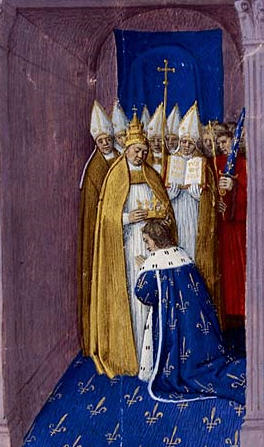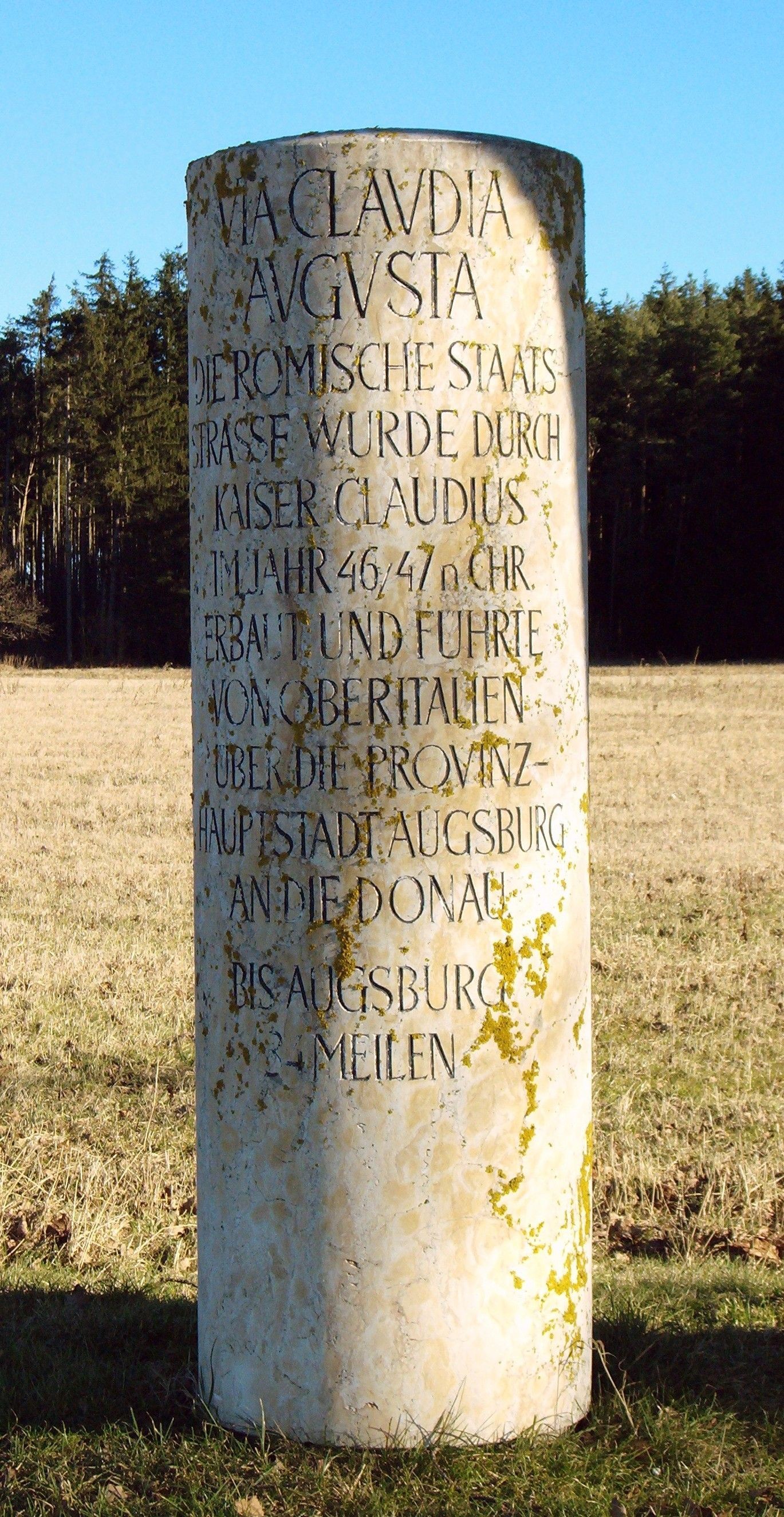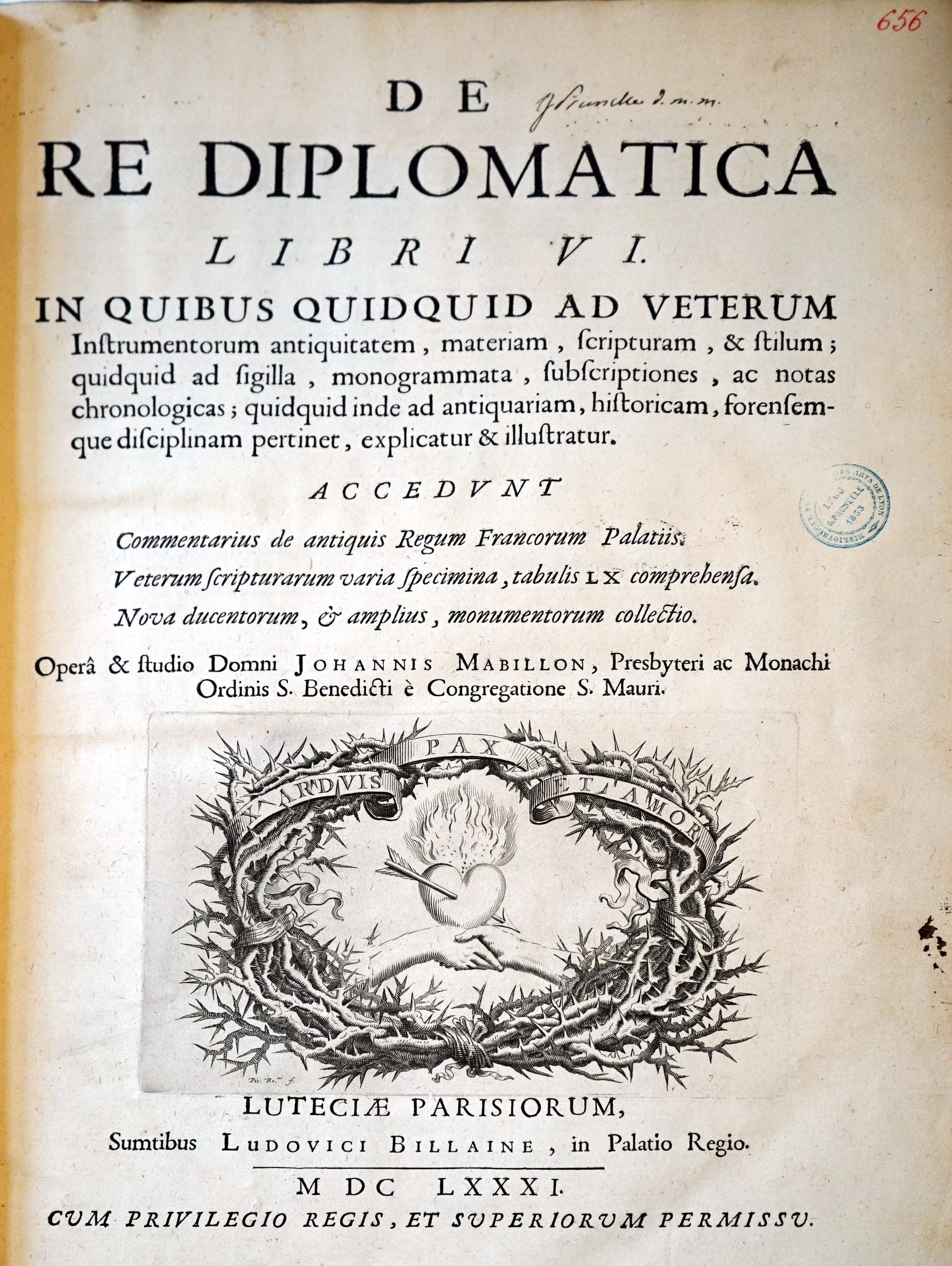|
Magnus Of Füssen
Saint Magnus of Füssen, otherwise Magnoald or Mang, was a missionary saint in southern Germany, also known as the Apostle of the Allgäu. He is believed to have been a contemporary either of Saint Gall (died 627) or of Saint Boniface (died 754) and is venerated as the founder of St. Mang's Abbey, Füssen. Legend There is almost no reliable information about him. The only source is an old "Vita S. Magni", which however contains so many obvious anachronisms that little reliance can be placed on it. It relates that the two Irish missionaries Saints Columbanus and Gallus, spent some time with Willimar, a priest at Arbon. Here Gallus fell sick and was put in charge of Magnus and Theodore (Magnoald and Theodo), two clerics living with Willimar, while Columbanus proceeded to Italy and founded Bobbio Abbey. When Gallus had been miraculously informed of the death of Columbanus he sent Magnus to pray at his grave in Bobbio. Magnus returned with the staff of Columbanus and thereafter they f ... [...More Info...] [...Related Items...] OR: [Wikipedia] [Google] [Baidu] |
Roman Catholic Church
The Catholic Church, also known as the Roman Catholic Church, is the largest Christian church, with 1.3 billion baptized Catholics worldwide . It is among the world's oldest and largest international institutions, and has played a prominent role in the history and development of Western civilization.O'Collins, p. v (preface). The church consists of 24 ''sui iuris'' churches, including the Latin Church and 23 Eastern Catholic Churches, which comprise almost 3,500 dioceses and eparchies located around the world. The pope, who is the bishop of Rome, is the chief pastor of the church. The bishopric of Rome, known as the Holy See, is the central governing authority of the church. The administrative body of the Holy See, the Roman Curia, has its principal offices in Vatican City, a small enclave of the Italian city of Rome, of which the pope is head of state. The core beliefs of Catholicism are found in the Nicene Creed. The Catholic Church teaches that it is th ... [...More Info...] [...Related Items...] OR: [Wikipedia] [Google] [Baidu] |
Otloh Of St
Otloh of St Emmeram (also Othlo) (c. 1010 – c. 1072) was a Benedictine monk, composer, writer and music theorist of St Emmeram's in Regensburg. Life Otloh was born around 1010 in the bishopric of Freising. After studying at Tegernsee and Hersfeld, he was called to Würzburg by Bishop Meinhard (due, Otloh tells us in his ''Book of Visions'', to his skill as a scribe). Otloh served as a secular cleric in the diocese of Freising before pursuing a monastic career against the wishes of his father; he eventually took monastic vows in 1032 at St. Emmeram's, Regensburg. Appointed dean in 1055, he also was ''magister scholae'' (head of the monastic school), and numbered among his students the reforming abbot William of Hirsau (†1091). Otloh was among the authors who elaborated the story of the transfer of the relics of Saint Denis the Areopagite to Regensburg, and long was believed to have forged letters of exemption for his monastery, a charge which recently has begun to be recons ... [...More Info...] [...Related Items...] OR: [Wikipedia] [Google] [Baidu] |
Christian Saints In Unknown Century
Christians () are people who follow or adhere to Christianity, a monotheistic Abrahamic religion based on the life and teachings of Jesus Christ. The words ''Christ'' and ''Christian'' derive from the Koine Greek title ''Christós'' (Χριστός), a translation of the Biblical Hebrew term ''mashiach'' (מָשִׁיחַ) (usually rendered as ''messiah'' in English). While there are diverse interpretations of Christianity which sometimes conflict, they are united in believing that Jesus has a unique significance. The term ''Christian'' used as an adjective is descriptive of anything associated with Christianity or Christian churches, or in a proverbial sense "all that is noble, and good, and Christ-like." It does not have a meaning of 'of Christ' or 'related or pertaining to Christ'. According to a 2011 Pew Research Center survey, there were 2.2 billion Christians around the world in 2010, up from about 600 million in 1910. Today, about 37% of all Christians live in the Ame ... [...More Info...] [...Related Items...] OR: [Wikipedia] [Google] [Baidu] |
Italy
Italy ( it, Italia ), officially the Italian Republic, ) or the Republic of Italy, is a country in Southern Europe. It is located in the middle of the Mediterranean Sea, and its territory largely coincides with the homonymous geographical region. Italy is also considered part of Western Europe, and shares land borders with France, Switzerland, Austria, Slovenia and the enclaved microstates of Vatican City and San Marino. It has a territorial exclave in Switzerland, Campione. Italy covers an area of , with a population of over 60 million. It is the third-most populous member state of the European Union, the sixth-most populous country in Europe, and the tenth-largest country in the continent by land area. Italy's capital and largest city is Rome. Italy was the native place of many civilizations such as the Italic peoples and the Etruscans, while due to its central geographic location in Southern Europe and the Mediterranean, the country has also historically been home ... [...More Info...] [...Related Items...] OR: [Wikipedia] [Google] [Baidu] |
Saint Magnus Of Cuneo
Saint Magnus of Cuneo ( it, San Magno) is venerated as a martyr and member of the legendary Theban Legion. The center of his cult is situated at the mountain sanctuary known as the Santuario di San Magno, in the Valle Grana, Castelmagno, in the province of Cuneo. His feast day is August 19. Legend Local tradition says he was a soldier of the Theban Legion, which had been commanded by Saint Maurice. The Legion, is supposed to have been decimated at Agaunum in 286 AD, but Magnus fled to the mountains of Piedmont, preaching the Christian religion in the Alps. He was eventually martyred and buried in the spot now occupied by the Santuario di San Magno. The church, however, may have occupied a spot once dedicated to the Roman god Mars. The current church was built between 1704 and 1716, in Piedmontese Baroque style, though its interior still preserves frescoes of the 15th and 16th centuries. As Damiano Pomi points out, neither documentary nor archaeological evidence supports the ... [...More Info...] [...Related Items...] OR: [Wikipedia] [Google] [Baidu] |
Pepin The Short
the Short (french: Pépin le Bref; – 24 September 768), also called the Younger (german: Pippin der Jüngere), was King of the Franks from 751 until his death in 768. He was the first Carolingian to become king. The younger was the son of the Frankish prince Charles Martel and his wife Rotrude, Pepin's upbringing was distinguished by the ecclesiastical education he had received from the monks of St. Denis. Succeeding his father as the Mayor of the Palace in 741, Pepin reigned over Francia jointly with his elder brother Carloman. Pepin ruled in Neustria, Burgundy, and Provence, while his older brother Carloman established himself in Austrasia, Alemannia, and Thuringia. The brothers were active in suppressing revolts led by the Bavarians, Aquitanians, Saxons, and the Alemanni in the early years of their reign. In 743, they ended the Frankish interregnum by choosing Childeric III, who was to be the last Merovingian monarch, as figurehead king of the Franks. Being well ... [...More Info...] [...Related Items...] OR: [Wikipedia] [Google] [Baidu] |
Via Claudia Augusta
The Via Claudia Augusta is an ancient Roman road, which linked the valley of the Po River with Rhaetia (encompassing parts of modern Eastern Switzerland, Northern Italy, Western Austria, Southern Germany and all of Liechtenstein) across the Alps. The route still exists, and since the 1990s increased interest in long-distance hiking and cycling have made the German and Austrian stretches of the Via Claudia Augusta popular among tourists, with the result that modern signage (''illustration'') identifies the revitalised track. Since 2007, the ''Giontech Archeological Site'', in Mezzocorona/Kronmetz (Italy) serves as the Via Claudia Augusta International Research Center with the support of the ''Foundation Piana Rotaliana'' and the Government of the City of Mezzocorona/Kronmetz. History In 15 BC, the Roman general Nero Claudius Drusus, the stepson of Augustus, got orders from his stepfather to improve the passage through the Alps for military purposes and to increase Roman control ... [...More Info...] [...Related Items...] OR: [Wikipedia] [Google] [Baidu] |
Schwangau
Schwangau is a municipality in the district of Ostallgäu in Bavaria, Germany. The village lies 4 km from the larger town of Füssen and just 1.5 km from Hohenschwangau, a collection of tourist-oriented facilities adjacent to the major tourist attractions of Schloss Neuschwanstein and Schloss Hohenschwangau. Schwangau has no railway station, but is served by buses connecting to Füssen, Hohenschwangau, and other nearby Alpine towns. It is the next-to-last town on the Romantic Road tourist route that terminates in Füssen. A ''castrum Swangowe'' is attested in 1090. It was situated on the site of Neuschwanstein Castle and was owned by the Elder House of Welf. After the death of Welf VI in 1191, it fell to the Staufer dynasty, and in 1268 to the empire. The modern coat of arms is based on the one shown in the Codex Manesse as that of Hiltbolt of Schwangau (d. 1256), gules, a swan argent. In the USA, the name "Swango" can be found. Presumably the name is descended from S ... [...More Info...] [...Related Items...] OR: [Wikipedia] [Google] [Baidu] |
Waltenhofen
Waltenhofen is a municipality in the district of Oberallgäu in Bavaria in Germany Germany,, officially the Federal Republic of Germany, is a country in Central Europe. It is the second most populous country in Europe after Russia, and the most populous member state of the European Union. Germany is situated betwe .... References Oberallgäu {{Oberallgäu-geo-stub ... [...More Info...] [...Related Items...] OR: [Wikipedia] [Google] [Baidu] |
Imperial Abbey Of Kempten
The Princely Abbey of Kempten (german: Fürststift Kempten or Fürstabtei Kempten) was an ecclesiastical principality of the Holy Roman Empire for centuries until it was annexed to the Electorate of Bavaria in the course of the German mediatization in 1803. Geography Located within the former Duchy of Swabia, the princely abbey was the second largest ecclesiastical principality of the Swabian Circle by area, after the Prince-Bishopric of Augsburg. It stretched along the Iller River in the Allgäu region, from Waltenhofen (Martinszell) in the south to Legau and Grönenbach in the northwest, and up to Ronsberg and Unterthingau in the east. The Imperial city of Kempten itself formed a self-ruling city its own right, enclaved within the abbey's territory. The Princely Abbey of Kempten covered approximately and included some 85 villages and hundreds of hamlets and farms. At the time of its annexation to Bavaria in 1802, it had some 42,000 subjects. History According to the 11th ... [...More Info...] [...Related Items...] OR: [Wikipedia] [Google] [Baidu] |
Ostallgäu
Ostallgäu is a ''Landkreis'' (district) in Swabia, Bavaria, Germany. It is bounded by (from the west and clockwise) the districts of Oberallgäu, Unterallgäu, Augsburg, Landsberg, Weilheim-Schongau and Garmisch-Partenkirchen, and by the Austrian state of Tyrol. The town of Kaufbeuren is enclosed by but does not belong to the district. History Before 1803 the region was split into several tiny states, most of them clerical states. When these states were dissolved in 1803, the Ostallgäu region became part of Bavaria. The kings of Bavaria soon developed a special relationship with the region and built their famous castles of Hohenschwangau and Neuschwanstein there. The district was established in 1972 by merging the former districts of Kaufbeuren, Marktoberdorf and Füssen. Geography "Ostallgäu" literally means "Eastern Allgäu". The term Allgäu is applied to the part of the Alps located in Swabia and their northern foothills. The district extends from the crest of the Alps ... [...More Info...] [...Related Items...] OR: [Wikipedia] [Google] [Baidu] |
Mabillon
Dom Jean Mabillon, O.S.B., (; 23 November 1632 – 27 December 1707) was a French Benedictine monk and scholar of the Congregation of Saint Maur. He is considered the founder of the disciplines of palaeography and diplomatics. Early life Mabillon was born in the town of Saint-Pierremont, then in the ancient Province of Champagne, now a part of the Department of Ardennes. He was the son of Estienne Mabillon (who died in 1692 at the age of 104) and his wife Jeanne Guérin. At the age of 12 he became a pupil at the Collège des Bons Enfants in Reims. Having entered the seminary in 1650, he left after three years and in 1653 became instead a monk in the Maurist Abbey of Saint-Remi. There his dedication to his studies left him ill, and in 1658 he was sent to Corbie Abbey to regain his strength. In 1663 he was transferred again to Saint-Denis Abbey near Paris, and the following year to the Abbey of Saint-Germain-des-Prés in Paris. This was a move which offered wide opportunities ... [...More Info...] [...Related Items...] OR: [Wikipedia] [Google] [Baidu] |
.jpg)




